Apple has been remarkably good at manufacturing cheap(ish) tablets for a firm that mostly concentrates on luxury items.
The basic iPad was long seen to be the gold standard, but the 2022 model witnessed a considerable price hike. Even at the time of writing, the cheaper 2021 model is a better choice for the majority of consumers.
It implies that there is now a chance for an Android tablet to fill the hole. Samsung has mostly dominated the premium tablet market, and there are a few nice alternatives around £250/$250, but what if you want something in between?
This is where the Xiaomi Pad 6 comes into play. At £369, it’s not the cheapest smartphone on the market, but it has the potential to provide excellent value. In the end, it fulfills that potential, but that doesn’t imply it’s the correct tablet for everyone.
Design & Build
- iPad-style design
- Premium build quality
- No fingerprint sensor
If Xiaomi wants the Pad 6 to be the Android counterpart of the iPad, the design is a solid place to start.
With rounded sides and a narrow, continuous bezel surrounding the display, this could easily be mistaken for one of Apple’s tablets from the front. While uninteresting, it is commendable for such a low-cost gadget.
The build quality has also not been affected. The aluminum back and frame feel quite sturdy, and Gorilla Glass 3 protects the screen from drops and scratches. I had no trouble using the Pad 6 without a case, which is not something I can say about every tablet.
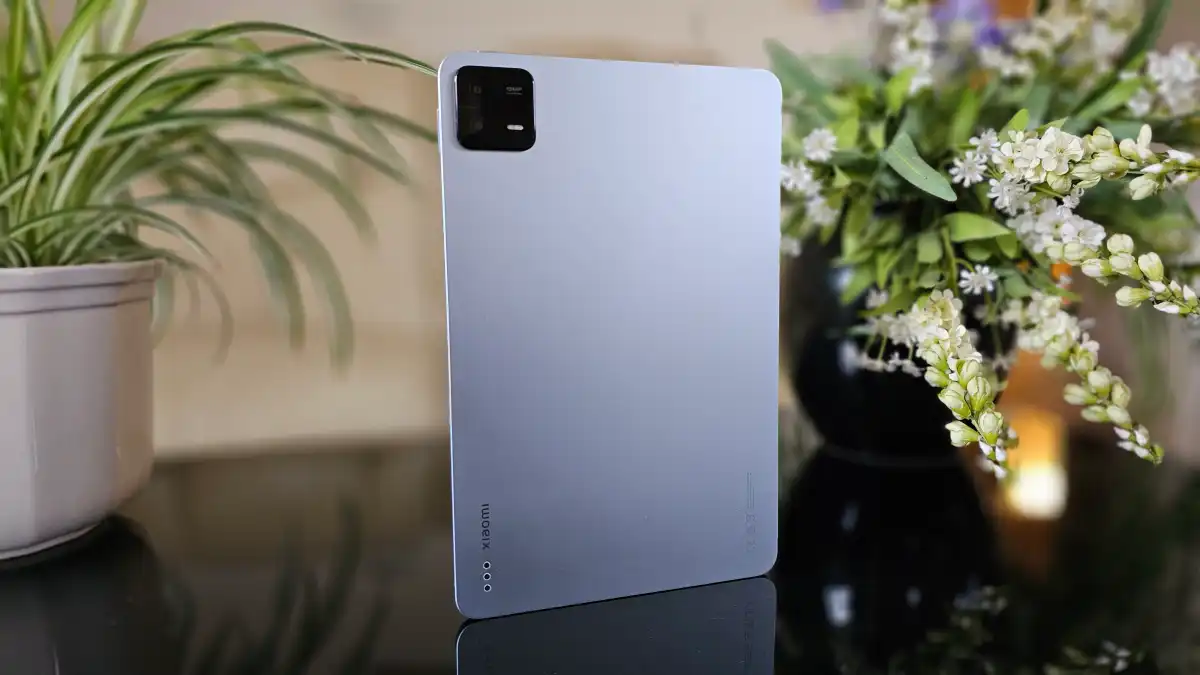
The gadget also has an IP53 rating, which means it is resistant to most dust and water sprays. It’ll be OK in the rain or at the beach, but nothing more extreme.
The only truly vulnerable area is the camera module, which protrudes from the rear of the device and causes a wobble when used face up on a table. I believe Xiaomi could have made them flush with the rear of the smartphone – I wouldn’t mind a tiny increase in thickness over the existing 6.5mm.
Despite the high-quality materials, the Pad 6 is surprisingly light. At 490g, it’s light enough to handle with one hand or use for a long gaming session. Of course, that weight will increase if you combine it with the official cover, which is sold separately for £29.
The aluminium back and frame feels impressively durable, while Gorilla Glass 3 ensures the screen is well protected against drops and scratches
However, it will obscure the Pad 6’s appealing back design. I really enjoy the ‘Mist blue’ version I tested because it shimmers in the light and is usually wonderful at preventing fingerprint smudges. The finish on the ‘Gold’ and ‘Gravity Gray’ models appears to be the same.
However, the lack of a fingerprint sensor is a major letdown. On the right side of the gadget, there appears to be an indent, however it is merely part of the design. Face unlock is your sole option instead of a traditional PIN, pattern, or password. It unlocks quickly but isn’t nearly as secure.
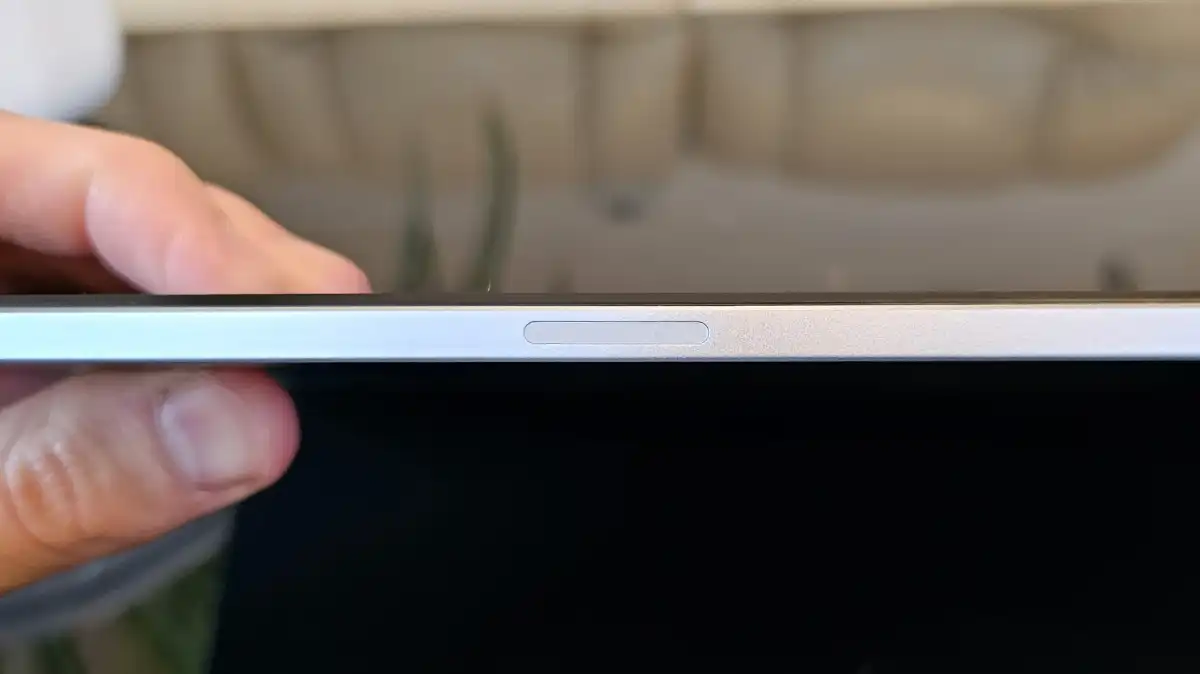
Screen & Speakers
- 11-inch LCD display
- 144Hz refresh rate
- Impressive quad speakers
The most remarkable aspect of the Pad 6 is its display. Despite the fact that the screen is LCD rather than OLED, it demonstrates that not all compromise is terrible.
Instead, Xiaomi has concentrated on improving almost everything else. The 28801800 resolution is exceptionally high for an 11-inch display, resulting in sharp and crisp text and graphics. You also get rich, brilliant colors, making it great for social media surfing or video viewing.
But it’s the 144Hz refresh rate that distinguishes the Pad 6 from most competitors (up from 120Hz on the Pad 5). It’s one of the most snappy tablets I’ve ever used, zipping between screens and menus with ease.
With LTPO tech only available on OLEDs, it can’t automatically adjust all the way down to 1Hz (to save battery life) though. Instead, the default dynamic mode simply moves between 60-, 90- and 144Hz depending on what you’re doing, or you can manually select any of these.
It’s one of the most responsive tablets I’ve ever tried, zipping between screens and across menus with excellent fluidity
Given the Pad 6’s portability, you might wish to use it outside. And with a maximum brightness of 550 nits, that’s entirely achievable. There’s also a ‘Sunlight mode’ that helps to boost sight even further.
Overall, the display on the Pad 6 is a pleasure to use. While it isn’t exactly top-tier, it is superior to the great majority of tablets in this price range (the Galaxy Tab S9 FE costs £449 and only has a 90Hz LCD). And I’m happy to report that the same is true for audio.
The quad stereo speakers, one in each corner, deliver a powerful punch. They’re especially effective in music, where most recordings have a great warmth and depth to their sound. However, the clarity of voice-based material is also quite very good.
The primary shortcoming is the lack of bass, but the speakers are still an excellent option to Bluetooth headphones or a speaker. However, there is no 3.5mm audio connector for wired connections.
Specs & Performance
- Qualcomm Snapdragon 870 and 6GB RAM
- Impressive performance, including gaming
- Only 128GB of storage
The Pad 6 is powered by Qualcomm’s Snapdragon 870 chipset.
It’s an upgrade compared to the Snapdragon 860 on the Pad 5, but still debuted in phones back in 2021. As a result, I was concerned that it might be starting to show its age.
But I needn’t have worried. Performance is very strong, and a key reason to buy the Pad 6 over many other mid-range tablets.
The only model available in the UK pairs it with just 6GB of RAM, but I found that to be plenty for almost all everyday tasks.
I often switched between online surfing, chatting, emails, watching movies, and listening to music on the smartphone. There were some little hiccups here and there, but everything seemed smooth and responsive, especially with that 144Hz display.
The Xiaomi Pad 6 is marketed as a business gadget. I believe it is a better choice for pleasure rather than productivity, although the amazing performance allows for simple split-screen multitasking.
Performance is very strong, and a key reason to buy the Pad 6 over many other cheap tablets
It’s also excellent for mobile gaming. Call of Duty: Mobile, PUBG Mobile, Asphalt 9, and EA Sports FC Mobile were among the most demanding titles I played on the Google Play Store.
Aside from a few missed frames here and there, gameplay felt as fluid as on a flagship tablet. And the gadget only ever became slightly warm to the touch, indicating that the cooling system is working properly.
Xiaomi Pad 6 benchmarks
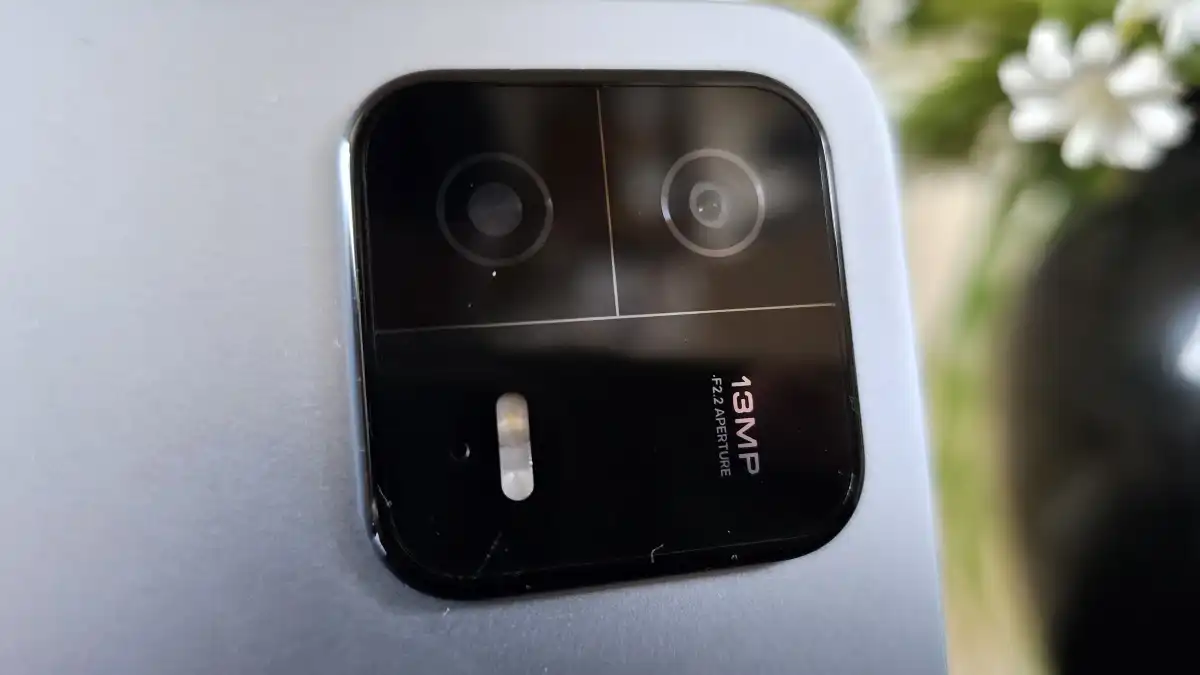
In well-lit situations, you may easily get stunning photographs of both landscapes and buildings. Detail and dynamic range are typically good, and exposure is well controlled.
Photos, like Xiaomi phones, are typically more contrasty and saturated than reality. Personally, I enjoy this since it eliminates the need to alter images before printing or publishing to social media. If you want photographs that are true to life, look elsewhere.
There is a variation between what you see in the viewfinder and the final output on all mobile devices. But it’s really dramatic here, so don’t be put off by the apparently unimpressive appearance.
In well-lit environments, you can get impressive images of both landscapes and architecture without too much effort
However, as compared to smartphones, you lose adaptability. You’re confined to low-quality digital zoom if you don’t have a telephoto lens, and the lack of an ultrawide sensor can be aggravating. You won’t be able to use portrait or macro modes, but close-up images are still shockingly nice.
The only other main feature is Night mode, which does a fantastic job of enhancing the screen while keeping important features.
On the front, an 8Mp lens can capture decent selfies. Detail and colour accuracy are usually good, though backgrounds tend to be overexposed – particularly skies. There’s also an artificial beauty mode that’s applied by default, so I’d highly recommend turning it off for more authentic results.
The rear camera can take video up to 4K at 30fps, but the default 1080p at 30fps is fine for most situations. Sadly, a combination of washed-out colours and no image stabilization (footage is wobbly with any significant movement) means it’s only really good for the occasional casual home video.
However, the Pad 6 is still a decent option for video calls. 1080p footage from the front-facing camera is decent, and movement shouldn’t be a big issue here for tasks like video calls.
Battery Life & Charging
- 8840mAh battery
- Average battery life
- Decent 33W charging
This is apparent in PCMark’s battery test, which replicates real-world workloads at a brightness of 200 nits. A time of 8 hours and 15 minutes isn’t awful, but it’s far from the best available on tablets.
If you’re using the Pad 6 throughout the day, or for a long gaming session, be prepared to charge it before bed
Of course, there are a few things you can do to help your battery last longer. Lowering the brightness, changing the screen refresh rate to 60Hz, and choosing power saver mode all help, but they also make the Pad 6 less fun to use.
Charging is, thankfully, faster than you’d anticipate from a tablet. The Pad 6 supports 33W USB-C rates, and an adapter is supplied in the package. It reached 21% in 15 minutes and 40% in half an hour, with a full charge taking little under 90 minutes.
Not bad at all. There’s no wireless charging, but that’s not a surprise.
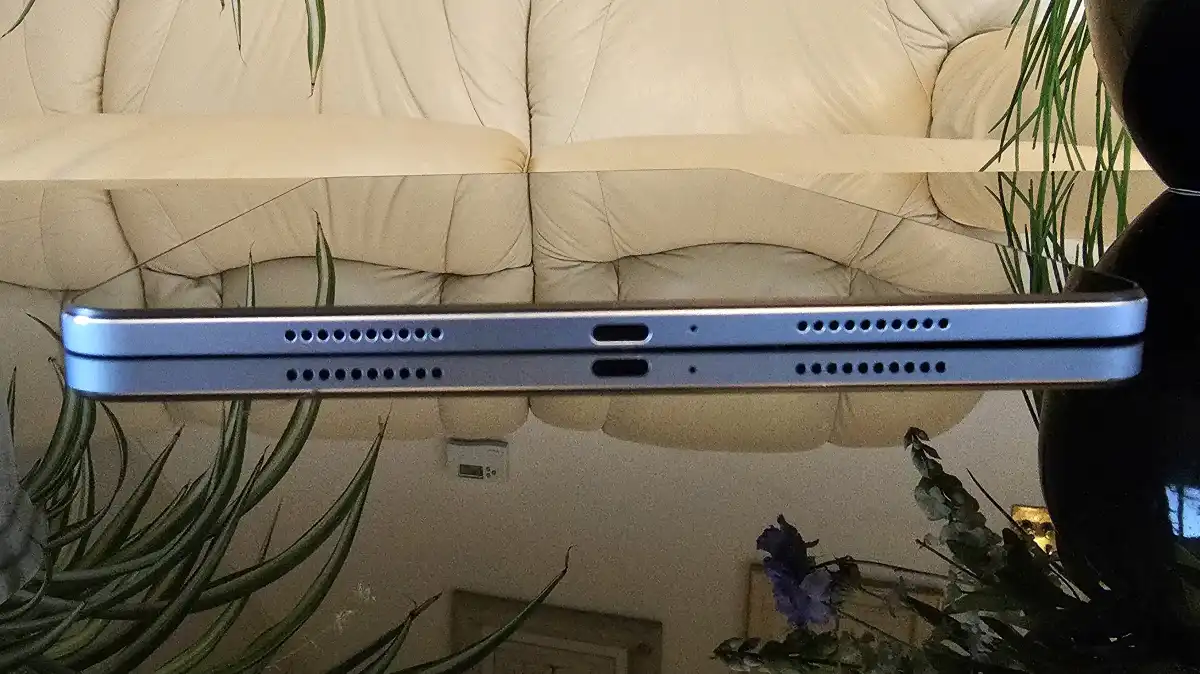
Software & Apps
- MIUI 14 over Android 13
- Easy to get used to
- No specific commitment to updates
The Pad 6 has hardware that can go toe-to-toe with the iPad, but don’t expect the same from its software.
Android simply isn’t optimised for the big screen in the same way as iPadOS, with many developers not viewing it as a priority. So, while many Xiaomi apps make the most of the large display, most third-party ones are simply magnified versions of the smartphone app.
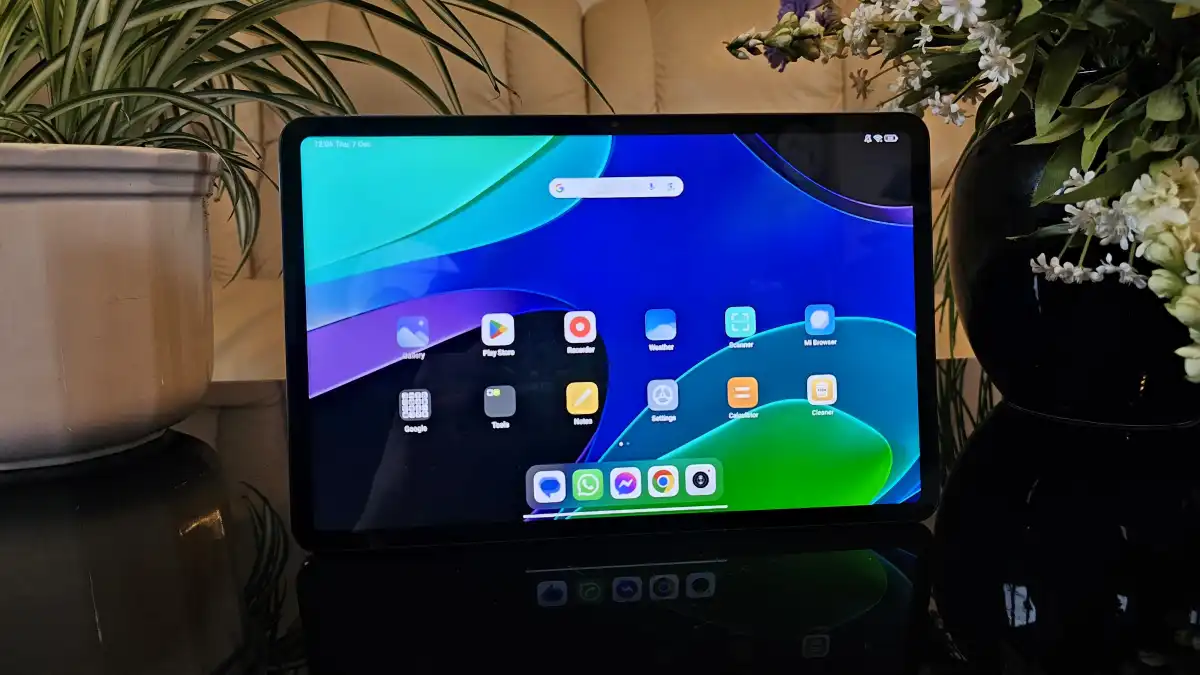
This, however, is an issue that affects all Android tablets and is not specific to Xiaomi. However, the company’s MIUI 14 skin (over Android 13 here) is.
I don’t like MIUI on Xiaomi smartphones, but the tablet version is much simpler to use. The split notification shade and fast settings make a lot of sense in this case, and the two-column Settings app is much easier to use.
I’m not a fan of MIUI on Xiaomi smartphones, but the tablet version is much easier to get along with
In addition, you may take use of the huge display by using smart floating windows and split-screen multitasking features. The brilliant colors of tiny icons aren’t nearly as distracting.
Of course, MIUI is not without flaws. There are still a slew of unpleasant supplementary applications pre-installed, many of which are inferior to their Google counterparts. I also wish the ‘Clear all’ button didn’t leave one open. However, it is no less user-friendly than any other Android tablet.
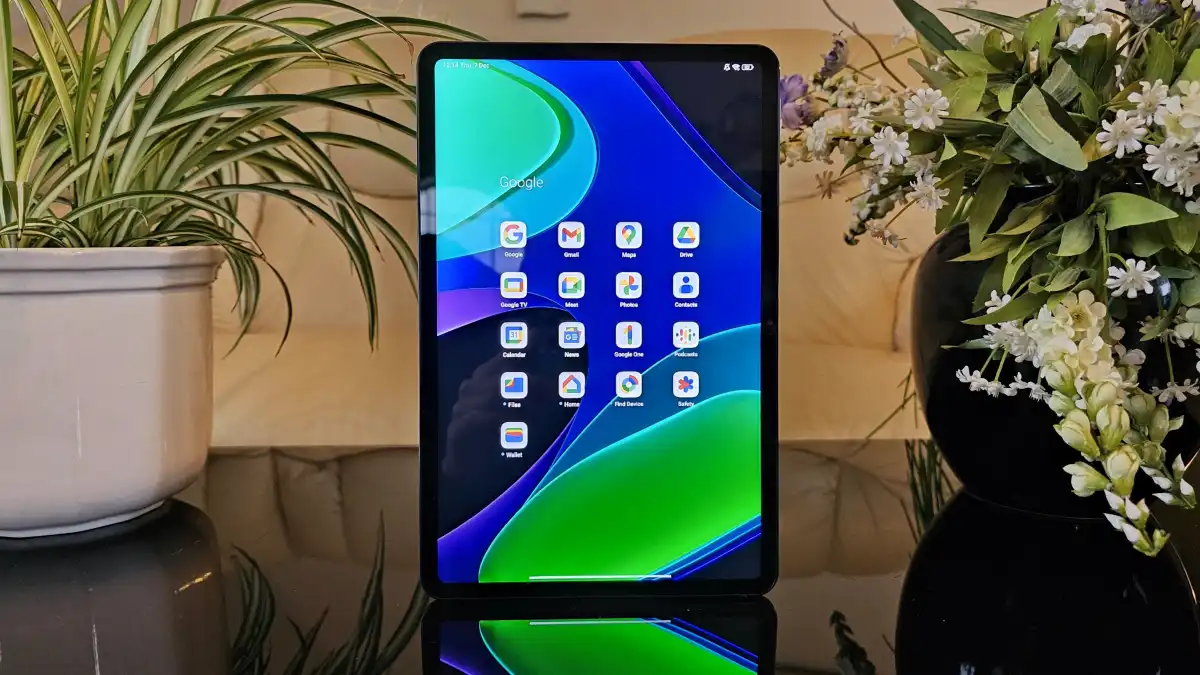
However, it is unclear how long Xiaomi would provide updates for the gadget. Its official article on cellphones states at least two years, so tablets will most likely follow suit. However, without a definite promise, you will be purchasing the tablet without knowing for certain.
It also takes time for a new version of Android to be released. At the time of writing, there is no indication on when the Pad 6 will receive Android 14.
Price & Availability
At launch, the Pad 6 costs £369 in the UK. That gets you 6GB of RAM and 128GB of storage, and it’s available from Xiaomi, Very or Amazon.
While not officially available in the US, you can still buy one via Amazon. Prices start at $349.99, though there are also options for 8GB of RAM and/or 256GB of storage here.
Specs
- Qualcomm Snapdragon 870 chipset
- 6/8GB RAM
- 128/256GB storage
- 11in 144Hz 2.8K (2880×1800) IPS LCD display
- Quad speakers
- 13Mp main camera, f/2.2
- 8Mp front camera, f/2.2
- USB-C
- WiFi 6
- Bluetooth 5.2
- 8840mAh battery
- Wired charging up to 33W
- 490g
- 253.9 x 166.2 x 6.5mm
- Android 13 with MIUI Pad 14


